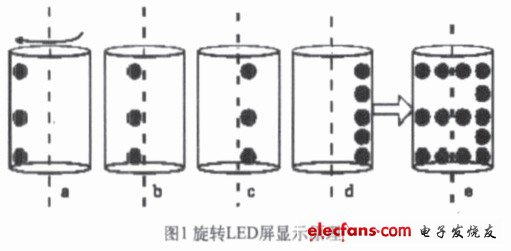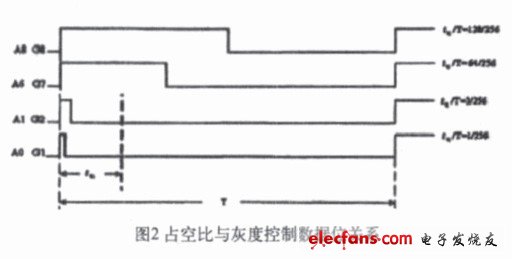Abstract: A new method for designing a rotating LED screen control system based on FPGA and SOPC technology is proposed. The design uses Altera's EP2C20 as the core. It integrates peripheral control devices such as NIOS soft core processor, SDRAM controller and EPCS controller in a single FPGA, and cooperates with custom Avalon interface modules such as infrared receiving module and LED control module. Realize the functions of rotary position sensing, infrared wireless control, color LED control and so on. The main advantages of this design scheme are integration and scalability. Only a small amount of modification to the scheme is needed to realize a control system with more functions to meet the needs of different rotating LED screen designs.
I. Introduction
The LED (1ight emitTIng diode) display is composed of a light-emitting diode array. Light-emitting diode (LED) is a current control device, which has the advantages of high brightness, small size, good monochromaticity, fast response speed, simple driving, long life, etc. It is capable of real-time, diversity and dynamic in various occasions The task of information release is therefore widely used. The LED large screen is a display screen composed of an array of LED devices through a certain control method, used to display various information such as text, image quotes, and television and video signals. As an important media for the release of modern information, LED large screens are receiving great attention from all sectors of society, especially business and advertising, and are widely used in industry, transportation, commerce, advertising, finance, sports competitions, and electronic landscapes.
At present, the LED screens on the market are basically flat LED screens, which have the advantages of stable display and easy modification in the display. However, the principle of the flat panel display determines that each pixel on the display corresponds to a single LED, which will inevitably cause the flat panel display system to be too expensive and the display control system is huge and other shortcomings. The field of view of the flat panel display is small. The new rotating column LED screen can overcome the above-mentioned shortcomings of the flat LED screen-it uses mechanical rotation scanning instead of progressive scanning, the number of LEDs used is greatly reduced, which greatly reduces the cost, but the screen range reaches 360 °.
SOPC is a new direction of embedded design. Using SOPC technology, multiple functional modules can be integrated into a programmable chip to form a programmable chip. The organic combination of SOPC technology and rotary LED control can realize a compact and stable rotary LED control system, which is also conducive to the function upgrade and maintenance of the control system.
Second, the basic principle and key technology of rotating LED screen
2.1 LED array rotation display
Rotating LED display is a new type of display that achieves graphic display by synchronously controlling the position and lighting state of light-emitting diode (LED). It has been rapidly developed due to its novel structure, low cost, and 360 ° viewing range. , Its core technology lies in precisely controlling the synchronization of the LED position and the luminous state. The display device of the rotating LED screen has only one column, and this column of LEDs is driven by a constant speed LED to rotate, and the lighting state of the LED is synchronously controlled by the control circuit, so that each time the motor rotates through a certain angle, the display content of this column of LEDs Just change it once, there is only certain display content when rotating to any position, that is to say, the rotating LED screen is displayed column by column, and mechanical rotation is used to replace the alternative scanning display, a, b, c in the figure below , D is the display state of the rotating LED screen at different times, d is the complete picture "3" seen by human eyes.

2.2 Color gray scale control of three primary colors LED
This design uses three primary color LEDs to achieve the display of color pixels. In order to achieve a colorful display, it is necessary to control the color grayscale of the LED. There are two main methods, namely the drive current control method and the drive pulse duty control method, but the former method is more difficult to implement and has a higher cost, while the latter has a simple principle and is easy to implement using digital design methods. The control adopts the duty control method.
The duty cycle control method to control the brightness of the LED is actually to control the LED lighting time. Periodically change the length of the LED's lighting time in a cycle, so as to achieve the change of LED brightness. In the working state, continuously changing the lighting time of the LED in the cycle can realize the continuous change of the LED brightness gray level. For 256-color display, only 8-bit chromaticity data is needed to control the grayscale of the LED. The relationship between the column data bits and the duty cycle is shown in Figure 2:

Wooden Speakers,Creative Wooden Speaker,Wooden Portable Speaker,Wooden Box Pc Speaker
Comcn Electronics Limited , https://www.comcnspeaker.com
